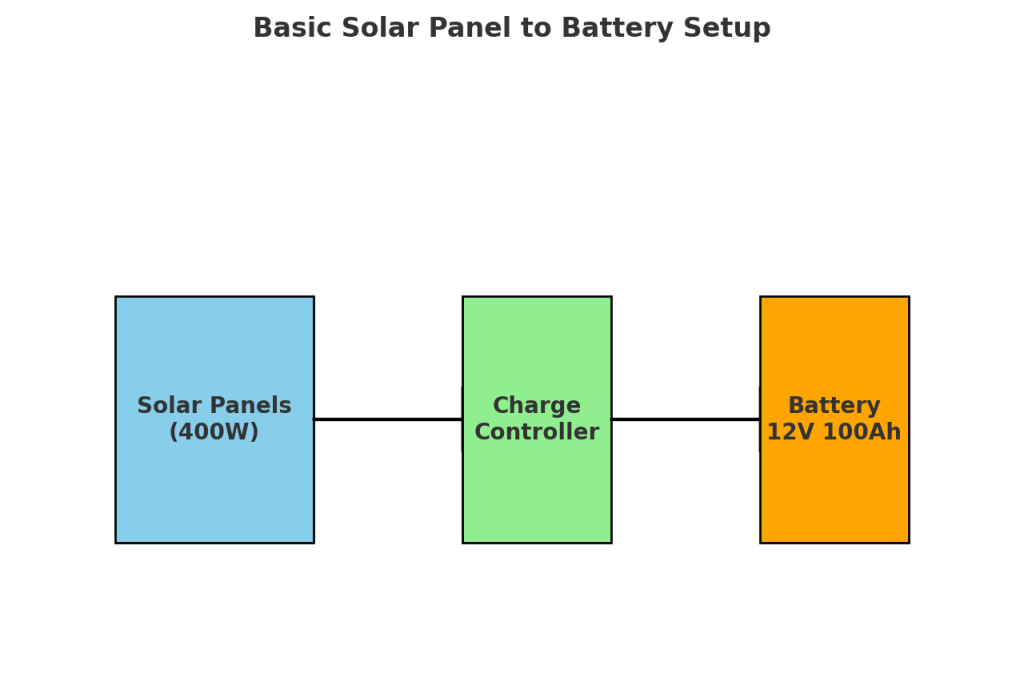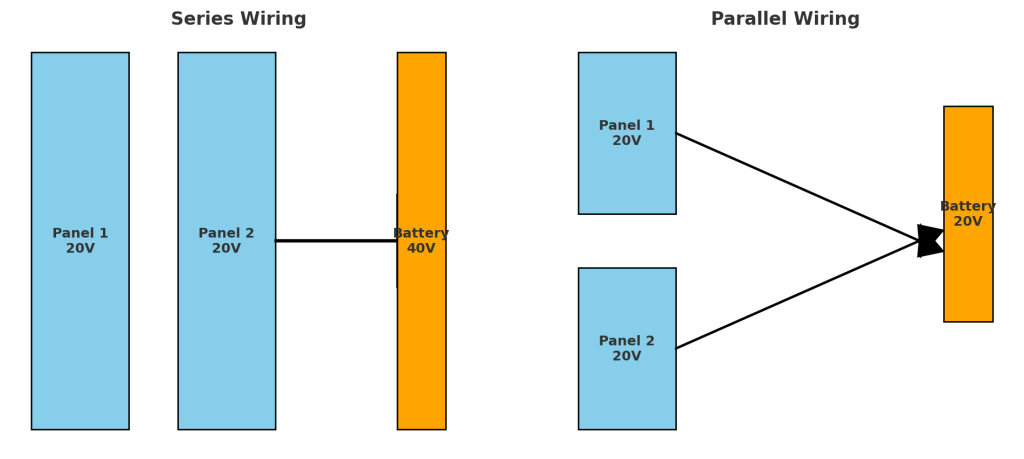If you’re setting up an off-grid solar system or just want to charge your batteries with solar panels, one of the most common questions is: “How many solar panels do I need to recharge my battery?”
The answer depends on three main factors:
-
The battery size (capacity in volts and amp-hours)
-
The number of peak sun hours in your location
-
The efficiency of your system (battery + charge controller)
In this article, we’ll explain the step-by-step process to calculate solar panel requirements for 12V, 24V, and 48V batteries. We’ll also compare lithium vs lead-acid batteries, and even show how to estimate charging time with a standard battery charger.
Step 1: Convert Battery Capacity to Watt-Hours
Batteries are usually rated in volts (V) and amp-hours (Ah). To calculate how much energy a battery stores, convert it into watt-hours (Wh) using this formula:
Watt-hours = Volts × Amp-hours
Examples:
-
12V 100Ah lithium battery = 12 × 100 = 1,280 Wh
-
24V 100Ah lithium battery = 2,560 Wh
-
48V 100Ah lithium battery = 5,120 Wh
👉 For lead-acid batteries, only 50% of the capacity is usable. So, a 12V 100Ah lead-acid battery effectively provides only 600 Wh.
Step 2: Find Out Peak Sun Hours
The next factor is sunlight availability. Solar production is measured in peak sun hours, not the actual hours of daylight.
-
1 peak sun hour = 1,000 watts of solar energy per square meter.
-
Example: In Houston, Texas, the lowest sun hours in winter is about 3.5 hours/day.
To find your local sun hours, you can use tools like PVWatts or solar irradiance maps.
Step 3: Calculate Solar Panel Size
Now, divide the battery’s watt-hour capacity by the available sun hours:
Battery Watt-hours ÷ Sun Hours = Required Solar Panel Watts
For example:
-
A 12V 100Ah lithium battery (1,280 Wh) ÷ 3.5 sun hours = 365 watts
-
After adjusting for efficiency losses (~90%), you’ll need about 400 watts of solar panels.
👉 That means two 200W solar panels will recharge a 12V 100Ah lithium battery in one day.

Wiring & Charge Controller Example
For the 400W setup:
-
Solar panels: 2 × 200W panels
-
Charge controller: 30A MPPT controller
-
Cabling & fuse: Properly sized wires and safety fuses
Panels can be wired in series (for higher voltage, lower current) or in parallel (better if shading is an issue).

Larger Battery Example (20kWh System)
What if you have a bigger setup, like 20,000 Wh (20 kWh)?
-
20,000 ÷ 3.5 = 5,714 W
-
With efficiency factor, you’ll need about 6,400 W of solar panels
That’s roughly 32 panels of 200W each to fully recharge in one day.
Lead-Acid Battery Example
For a 12V 100Ah lead-acid battery:
-
Usable capacity = 600 Wh
-
600 ÷ 3.5 = 170W
-
With efficiency factor, ≈ 200W solar panels needed
👉 But since it stores only half the usable energy compared to lithium, you’d need two lead-acid batteries to match one lithium battery.
Charging with a Battery Charger
If you’re charging with a wall-powered charger instead of solar:
-
A 12V 20A charger provides about 240W
-
To charge a 12V 100Ah lithium battery (1,280 Wh):
1,280 ÷ 240 = ~5.3 hours
Conclusion
The number of solar panels you need depends on battery size, sunlight availability, and system efficiency.
-
For a 12V 100Ah lithium battery, around 400W of solar panels is ideal.
-
Larger systems like 24V, 48V, or 20kWh setups require proportionally more panels.
-
Lithium batteries are more efficient and give full usable capacity, while lead-acid batteries need nearly double the size to match.
By following these calculations, you can design the right solar system for your off-grid home, camper, or backup power setup.
Leave a Reply